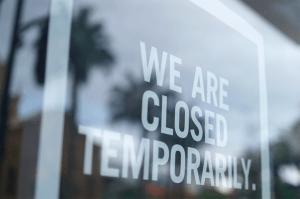It’s hitting the brakes which often doesn’t come naturally. Though the idea of relaxing on a beach, hitting the ski slopes, or visiting a new destination might be intriguing and tempting, all can easily fall short because you won’t actually enjoy your vacation. Instead, you’ll be checking your smartphone and/or tablet, and might even phone-in now and again just to see what’s going on, and of course, to provide your sage advice.
How to Take a Vacation from Your Business and Make It Work
Why you ought to be concerned about your business while you’re away, you have to establish and respect some boundaries. It’s very difficult to put aside your business passion, but such a thing is absolutely necessary; and, it’s also quite healthy in more ways than one. While the human species is built, in-part, for work, it is also limited as to what it can handle. These are the reasons we feel tired after a day at work and why entertainment has risen to such a popular level for escape.
Giving yourself permission to walk away from your company can be difficult. But if you can’t do it for yourself, do it for your staff: When you take vacation time, you’re setting a good example. —Entrepreneur.com
Of course, such an escape can not only come from sports, books, television, and the like, but also from vacation. Some business owners actually go on vacation and never really leave their businesses, which is the definition of waste. When you consider the fact that someone would make plans, pay for travel and lodging, along with other expenses and not truly enjoy their time off, it makes the whole affair more costly and more unhealthy.

I had a partner, in a previous business, who one time proclaimed with some sense of pride and peppered with a bit hint of martyr … “I HAVEN’T TAKEN A DAY OFF IN 5 YEARS”. Needless-to-say, he was and is a very hard worker, but reports from his remaining staff say the environment is like a “Salt Mine”!
Everyone needs a break from work and that certainly includes business owners. When you start and build a company, it’s only natural to want to stay the course and keep your hands on the wheel. After all, the business wouldn’t exist without you and it wouldn’t be able to grow if you weren’t there. Though it might be difficult to take time off, it’s necessary and there are things you can do to take a vacation from your business and make the most of it:
- Have an action plan in-place. This isn’t a plan for you, but those who stay behind to run the business. It seems that Murphy’s Law takes effect the moment you aren’t present, so, have at least one contingency plan but don’t make it complicated. It should be easy to follow and simple.
- Know that you’ve invested in the right people. Your employees were likely hand-picked by you and this is a great time to see how well you chose your team members. Of course, there’s probably one who is a natural leader and who knows the business well to leave in-charge while you’re away.
- Disconnect from the day-to-day. You might check-in very briefly on a weekly basis, and that’s acceptable; but don’t give into the temptation of running your business from a distance. In our time, technology allows us to connect at any time and share information in moments. Those moments are just too precious and you need to disconnect.
- Put your family first. Okay, so your conscience is telling you that you work too much, too long, and don’t spend enough time with your family but you don’t change. This is the time when you can spend quality time and create wonderful memories.
I have a client who hired my company in 2011 to help his retail business during the rough economic recession. He said that he was at his limit, and was ready to “throw in the towel”. Besides helping this client to recover, improve sales, cash flow, moral and pay down past debt and taxes, our Client wanted more time off with his family and vacations. The time off and vacations appeared to be a distant goal given the carnage left from simply trying to survive the recession, but we developed a strategy and took action weekly to clear up the past taxes and debt while helping him pursue his goal of time off and vacations. In 2013 he took time off and this motivated him to do it again.
In 2014, our Client planned a family vacation for the summer. So, we helped our Client plan out and detail the specific and critical business metrics that needed to be managed by each of his team while he was gone. My Client reviewed this plan and his expectations on the metrics and operations protocol (i.e. Leads, Sales, Cash Receipts per Day, Deliveries, Installations, Service, and how to handle emergencies) with his Team. When he returned from his vacation, I asked; “how was your vacation and how did your team handle your being away for 10 days?” His response, “this was one of the best family vacations I’ve had in a long, long time, and there were very few issues while I was gone … I am looking forward to doing it again”. My Client took another week in Montana in the fall of that year, and 2014 ended up a record year in sales all while he built a team that will continue to allow him more vacations and time off as he grows.
The value in taking time off is that it drives you to develop processes, systems and to communicate clear expectations, responsibilities and accountability and goals for your team. This exercise allows your team to grow and develop and to show their capacity and leadership. This stretches your organization and helps you and the team to mature, and this process develops your business into a stronger asset that moves you closer to a turn-key operation. Turn-key operations increase your business value for the eventual day you want to exit for more vacations and time with your family and friends.
The most important thing you can do is to have fun; and, if you take this advice, you’ll be able to allow yourself to unwind and truly enjoy the fruits of your labor.
[shareaholic app=”follow_buttons” id=”26833294″]




